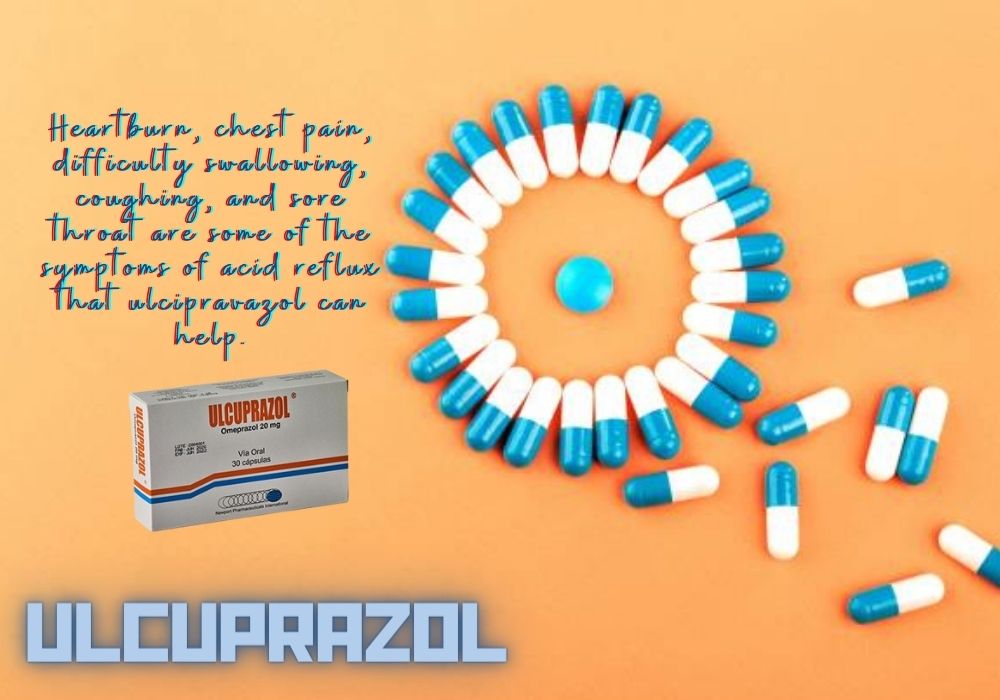Ulcuprazol is a powerful proton pump inhibitor (PPI) that promotes intestinal health. This page provides a thorough analysis of Ulcuprazol’s applications, dose recommendations, administration techniques, and significant concerns by combining data from a variety of sources.
Synopsis:
Ulcuprazol, a PPI, is well known for its ability to effectively reduce the production of stomach acid. This decrease is essential for reducing the symptoms of disorders like GERD, heartburn, and peptic ulcers that are made worse by high stomach acid.
Action Mechanism of Ulcuprazol:
The mechanism of ulciprazol involves inhibiting the proton pump in the stomach, which is in charge of secreting acid. This inhibition greatly lowers the formation of acid, relieving symptoms and promoting intestinal repair.
Ulcuprazol Applications:
Ulcuprazol is primarily used in the management of:
Relaxing the esophagus and lessening discomfort provides relief from acid reflux. And heartburn.
peptic ulcers, speeding up the recovery process.
When someone has GERD. Or gastroesophageal reflux disease. It successfully regulates the stomach’s excessive production of hydrochloric acid.

Suggested Dosage:
Although 20 milligrams once daily is the recommended starting dosage, customization is essential. Variations in the prescribed dosage may result from a doctor’s prescription and individual health needs.
Extra Attention to Detail
Beyond its advantages, Ulcipprazol may cause headaches, nausea, and dizziness. And diarrhea as adverse effects. Consultation with a physician is necessary before use, especially if you are breastfeeding a baby or pregnant. or concurrently taking different prescription medications.
Lifestyle changes like stress reduction and nutritional changes increase treatment effectiveness. To track advancement and modify the treatment plan as necessary, routine examinations are crucial.
Methods of Administration:
Ulcuprazol Postponed Release Take the capsules before eating.
Although there are other ways to administer the medication, capsules should be taken whole.
Alternative ways of administration are recommended, and dosage recommendations are based on weight for pediatric patients.
Detailed directions for making oral suspension and giving applesauce-filled capsules to patients with different medical problems.
Dosage for Particular Situations:
Treatment for an active duodenal ulcer in the short term: 20 mg once day.
Eradication of H. pylori: Triple and dual therapy regimens are used.
40 mg once a day for 4–8 weeks is the prescribed dosage for gastric ulcers.
Treatment for GERD: varying dosages for individuals with erosive esophagitis and those with symptoms.

Keeping and Managing:
Ulcuprazol comes in three different dosage levels in capsule form: 10 mg, 20 mg, and 40 mg. Additionally, 2.5 mg or 10 mg packets of an oral suspension are available. Particular guidelines for storing both formulations are provided.
Drug Interactions and Extra Points to Remember:
Ulcipprazol may interact with some drugs, so use caution when taking it. It’s critical to understand how it influences the pharmacokinetics of additional active substances. Interactions with CYP2C19 and CYP3A4 inducers and inhibitors are detailed in detail for a complete understanding.
Conclusion:
Ulcuprazol is a potent treatment for a variety of gastrointestinal disorders that provides comfort by lowering the production of stomach acid. However, given the possible adverse effects and unique health situations. Medical supervision must emphasize the necessity of using it.

